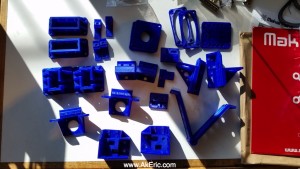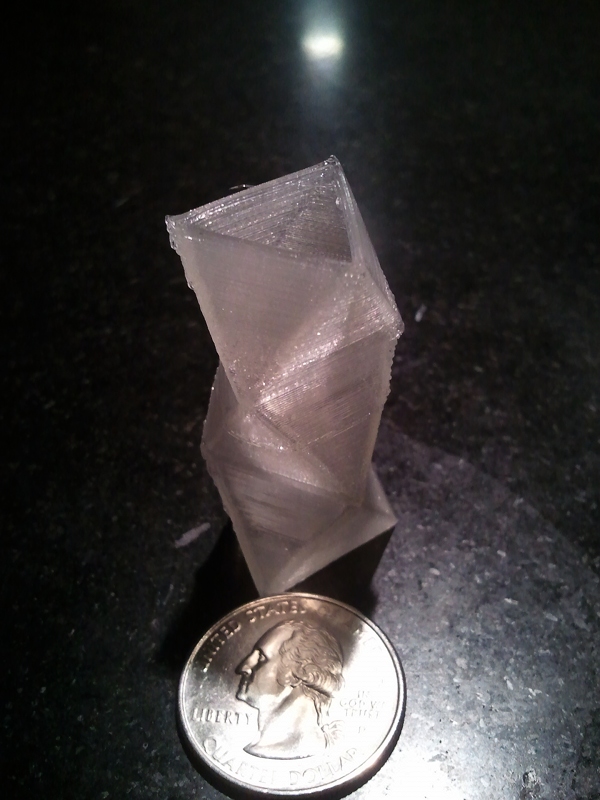Building the C-Bot 3D printer: Part 5 : Printing the parts
Jump to C-Bot blog index to see all the posts.
This is really ‘Part 0’, since Mason printed all these parts for me (on my Rep1 he was borrowing) while I was on vacation, before I even started blogging about it. But it’s worth bringing up the specifics.
Carl Feniak has a full list of the stl’s to download & print over on the C-Bot’s OpenBuilds page. Mason ended up 3d modeling the entire printer in Maya as a sanity-check for himself, and based on that, made some adjustment to Carl’s files (which my prints are based on). If Mason posts those updates I’ll be sure to link to them.
I still need to print out a few more things, like the attachment for the E3D Volcano, but otherwise most of the printing is done.
Print settings were:
- Printed on Makerbot Replicator 1
- MakerGeeks ‘Maker Filament’ PLA 1.75mm, “Soulful Blue“
- 300 micron layer height, 2 shells (probably should have been 3), 40% infill, 4 ceiling/floors, .4mm nozzle
- HPB @ 60 (to help them stick\lay flat)
- Sliced in Simplify 3D
Jump to C-Bot blog index to see all the posts.


